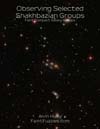








Visual Observing Guides
of the Deep Sky
In the late '70s, I found inspiration in AstroCards by Kepple and Sanner, which led me to the idea of creating comprehensive visual observing guides for advanced deep-sky observers. By the early 2000s, I started building my personal "one stop shop" observing pages for various observing programs. I began with deep sky object catalogues like Hickson Compact Galaxy Groups and Abell Planetary Nebulae. Then I produced one for the Arp Peculiar Galaxies. Then I decided to build them out with eyepiece renditions and observing notes and make them available to others for encouragement and a tool. So I launched the Hickson and Abell Planetary guides in 2005 and the Arp in 2007. There were nothing like this at the time of release.
Originally, I had planned to release additional guides for purchase for various deep sky catalogues, but the extensive time required for compiling my observing notes, sketches and then build the guide led me to offer the basic field observing guides for FREE to observers. I hope you find these guides useful and enjoyable in the field.
Over the past two decades and during my free time, I dedicate my search to identifying fascinating catalogues for challenging deep sky objects to observe. While some catalogues offer a significant challenge to observers with 30" or larger telescopes, I have also developed field visual observing guides tailored to those with smaller to moderate apertures. For instance, individuals who have completed the Messier list can advance to the Herschel 400 list, which is well-suited for observers with telescopes as small as 6 inches. This page contains Field Observing Guides encompassing a wide range of celestial objects, ensuring there is something of interest for every observer.
The central idea behind the "one-stop shop" concept is to furnish observers with all the necessary star charts and information for locating and observing the object through star hopping. No computers or digital setting circles needed. Each page contains a naked-eye chart with a Telrad overlay centered on the object, in addition to a finder chart and a DSS image. I intentionally used DSS images versus higher resolution SDSS or PanStarrs as it is reflects closer to the star field through the eyepiece of a large telescope. And the DSS image serves as an additional finder chart for the really dim small objects, which require high magnification to see. I continue to use this method in my visual observing program, which is why I opt not to use digital setting circles (DSC) on my 22" reflector - I find it quicker to locate objects through star hopping. The visual observing guides here are designed to be used at the observing field and at the eyepiece.
I regularly make additions, so be sure to check back periodically. Revisions are detailed at the back of each Observing Guide.
Versions available
PDF edition
Click on the cover image on the left to download the PDF.
Hard Copy Print Editions
Most of these guides are available through my regular publisher at a nominal cost. They are provided for convenience as I realize that some do not have a laser printer, let alone a duplex printer. Or just don't want to bother printing the whole book and then taking it to a print shop to have it coil bound. Some are printed on standard paper and others are printed in coated 80# paper, which is a little nicer paper, but costs an average of $2 more. It is worth the extra.
I am pleasantly surprised at my publisher's final price as it is less expensive than printing the whole thing at a print shop, color stock covers and then coil binding it. One observer noted that when he sent the 2013 OOTW to Kinko's and had them print them double-sided in black and white, then bound them with a clear cover on the front and black vinyl on the back. It cost him about $29! It is about half that from my publisher (data from 2013). Just another way of making them available for a modest cost to all. Hope that you feel that this option is valuable for you.
Reminder: These print books are COIL-BOUND for ease of use at the telescope and observing table, especially those with large reflectors with ladders. They are at the eyepiece field guides, NOT armchair books. :)
Support
If you feel led to support my efforts on creating and keeping the guides up to date, you can order them from my publisher by hitting the Print Version link throughout this page or the link herefor the entire listing of guides available. Each guide purchased sends a couple bucks my way for my efforts. I purposely kept it low as I do this a labor of love and for a way for you to support me.
New Advanced Visual
Observing Guide!
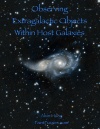 Observing Extragalactic Objects
Within Host Galaxies - This
observing guide with 158 host
galaxies with observable extragalactic objects. Each
host galaxy has annotated extragalactic objects with
scholarship plus links to observing notes and sketches
from a few well known and skilled observers. Suggest a
16-inch or larger telescope to successfully observe
these objects. A very skilled observer can see some of
them with telescopes as small as 6 to 10 inches.
(357 pages, 33MB)
Observing Extragalactic Objects
Within Host Galaxies - This
observing guide with 158 host
galaxies with observable extragalactic objects. Each
host galaxy has annotated extragalactic objects with
scholarship plus links to observing notes and sketches
from a few well known and skilled observers. Suggest a
16-inch or larger telescope to successfully observe
these objects. A very skilled observer can see some of
them with telescopes as small as 6 to 10 inches.
(357 pages, 33MB)
As I spent a bit of time on this guide compared to my
other guides below and if you want to support me and
this website, you can order a color print version
printed on 80# coated premium paper. Click the
link to order directly from my publisher. Note: Premium
coated paper is a bit more durable on the field and
costs a few bucks more. I think it is worth it. COLOR
Print Version
The
Herschel Objects
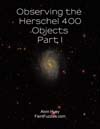
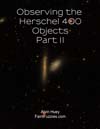
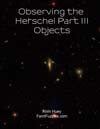
Advanced Observing
Projects (12-inch telescope or larger)
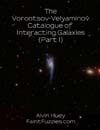 The
Vorontsov-Velyaminov Catalogue of Interacting
Galaxies (Part I) - Dr. Boris
Vorontsov-Velyaminov of Sternberg Astronomical
Institute, Moscow University, created this list of
interacting galaxies in 1959. A majority of the
systems were found on the POSS plates from the Palomar
48-inch Schmidt astrograph. The original Part I
list contained 355 systems, many of which are listed by
Dr. Halton Arp AFTER Boris did his list. Note:
This observing guide will contain only the non-Arp VV
objects as the Arp are covered in my publication,
“Observing the Arp Peculiar Galaxies”. This is a
nice list to work on after you have observed the Arps.
The
Vorontsov-Velyaminov Catalogue of Interacting
Galaxies (Part I) - Dr. Boris
Vorontsov-Velyaminov of Sternberg Astronomical
Institute, Moscow University, created this list of
interacting galaxies in 1959. A majority of the
systems were found on the POSS plates from the Palomar
48-inch Schmidt astrograph. The original Part I
list contained 355 systems, many of which are listed by
Dr. Halton Arp AFTER Boris did his list. Note:
This observing guide will contain only the non-Arp VV
objects as the Arp are covered in my publication,
“Observing the Arp Peculiar Galaxies”. This is a
nice list to work on after you have observed the Arps.
Many of these
objects require a fairly large telescope (16-inch or
larger) (188 pages, 82MB)
Print Version (Printed on
80# coated paper)
 The
Vorontsov-Velyaminov Catalogue of Interacting
Galaxies (Part II) – This
catalogue consists of 497 objects created in 1976 as
Boris continued his work on interactive galaxies.
The list starts with VV 356 and ends with VV852.
The
Vorontsov-Velyaminov Catalogue of Interacting
Galaxies (Part II) – This
catalogue consists of 497 objects created in 1976 as
Boris continued his work on interactive galaxies.
The list starts with VV 356 and ends with VV852.
Many of these objects require a fairly large telescope (16-inch or larger) (458 pages, 153MB) Print Version
Both Part I and Part II were updated
in Nov 2025 with more than a few enhancements. See
revision history.
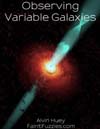 Variable
Galaxies – A
selection of 60+ variable galaxies, most are observable
with a 20-inch telescope. This class of objects
includes BL Lacertae, Active Galactic Nuclei (AGN), and
Optically Violent Variable quasars (OVV). (145 pages,
49MB) Print Version
Variable
Galaxies – A
selection of 60+ variable galaxies, most are observable
with a 20-inch telescope. This class of objects
includes BL Lacertae, Active Galactic Nuclei (AGN), and
Optically Violent Variable quasars (OVV). (145 pages,
49MB) Print Version
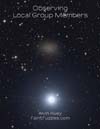 The Local
Group –Galaxies
within our celestial backyard. Some of the
Local Group members are close enough that you can see
some of their globular clusters, H-II regions, OB
associations, and open clusters. They are clearly
marked and offer a great challenge for those with large
telescopes. (84 pages, 46MB) Print Version
The Local
Group –Galaxies
within our celestial backyard. Some of the
Local Group members are close enough that you can see
some of their globular clusters, H-II regions, OB
associations, and open clusters. They are clearly
marked and offer a great challenge for those with large
telescopes. (84 pages, 46MB) Print Version
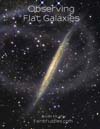 Flat
Galaxies - A
selection of 170+ Flat Galaxies from the Revised Flat
Galaxy Catalogue. Many are faint and require a
large telescope. I recommend a 12-inch or larger
scope to tackle the majority of objects in this
list.
Flat
Galaxies - A
selection of 170+ Flat Galaxies from the Revised Flat
Galaxy Catalogue. Many are faint and require a
large telescope. I recommend a 12-inch or larger
scope to tackle the majority of objects in this
list.
(201 pages, 74MB) Print Version (Printed on 80# coated paper)
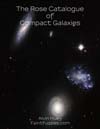 The Rose
Catalogue of Compact Galaxies - Dr. James
A. Rose wrote a paper discussing a small selection of 33
northern and 5 southern very compact galaxy groups for
large telescopes. This list is considered to be a
bit more challenging than the Hickson Galaxy
Groups.
The Rose
Catalogue of Compact Galaxies - Dr. James
A. Rose wrote a paper discussing a small selection of 33
northern and 5 southern very compact galaxy groups for
large telescopes. This list is considered to be a
bit more challenging than the Hickson Galaxy
Groups.
Recommend
18-inch or larger scope as most are very small and
faint. All objects in this list are visible in the
spring months. (89 pages, 10MB) Print Version
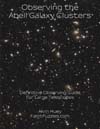 Abell
Galaxy Clusters – In 1958,
Dr. George Abell compiled a list using POSS1 plates
consisting of 2712 galaxy clusters (limited to
-27° and above). Later in 1989, Dr. Abell
and Harold Corwin added an additional 1361
clusters. I've selected 80+ Abell Galaxy Clusters
for this observing guide for intermediate and advanced
observers with large telescopes.
Abell
Galaxy Clusters – In 1958,
Dr. George Abell compiled a list using POSS1 plates
consisting of 2712 galaxy clusters (limited to
-27° and above). Later in 1989, Dr. Abell
and Harold Corwin added an additional 1361
clusters. I've selected 80+ Abell Galaxy Clusters
for this observing guide for intermediate and advanced
observers with large telescopes.
16 inch or
larger scope is recommended. (431 pages, 46MB)
Print Version
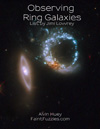 Ring Galaxies - A
selection of ring galaxies generated Jimi
Lowrey. He observes about 15 times a month with
his 48” f/4 reflector. Some of them are pretty
tough and will require a very large telescope, such as
Jimi’s 48" reflector.
Print Version
Ring Galaxies - A
selection of ring galaxies generated Jimi
Lowrey. He observes about 15 times a month with
his 48” f/4 reflector. Some of them are pretty
tough and will require a very large telescope, such as
Jimi’s 48" reflector.
Print Version
Challenging
Observing Projects for advanced observers with
very large telescopes (25- inch or larger)
Selected
Shakhbazian Galaxy Groups –
Very challenging compact galaxy groups, much more
challenging than the Hickson Compact Galaxy
Groups. Dr. Shakhbazian et al published a
list of 377 groups. 120+ brightest groups in
this guide.
Observing notes for Shakhbazian
Groups with telescopes from 22 to 48 inches.
Click here.
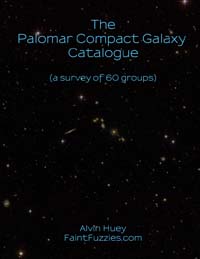 The Palomar Compact
Galaxy Catalogue - A select
sampling of 60 of 459 compact groups. This list
was created by Dr. Angela Iovino of Italy, using similar
selection criteria as Hickson, Shakhbazian, and Rose in
their respective projects. The criteria are a bit
tighter and use an automated algorithm scanning POSS
plates > 40 degrees from the galactic equator.
The Palomar Compact
Galaxy Catalogue - A select
sampling of 60 of 459 compact groups. This list
was created by Dr. Angela Iovino of Italy, using similar
selection criteria as Hickson, Shakhbazian, and Rose in
their respective projects. The criteria are a bit
tighter and use an automated algorithm scanning POSS
plates > 40 degrees from the galactic equator.
This
list
is the ultimate compact galaxy list. All of them
are less than an arc minute. Think about it, 1 arc
minute is 60 arc seconds, meaning that many entire
Palomar Compact Galaxy groups would be covered by
Jupiter! (76 pages, 9MB) Print Version
Observing Projects for Smaller Telescopes (6-inch telescope or larger)
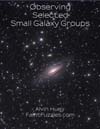 Selected
Small Galaxy Groups – Small
Galaxy Groups inspired by the Astronomical League Galaxy
Clusters Observing Club with some additional
selections. 102 groups. 8-inch or larger
scope. (221 pages, 44MB) Print Version
(Printed on 80# coated paper)
Selected
Small Galaxy Groups – Small
Galaxy Groups inspired by the Astronomical League Galaxy
Clusters Observing Club with some additional
selections. 102 groups. 8-inch or larger
scope. (221 pages, 44MB) Print Version
(Printed on 80# coated paper)
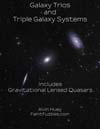 Galaxy
Trios and Triple Systems – Galaxy
Trios inspired by Miles Paul’s list and by the
Astronomical League Galaxy Groups Observing Club.
But there are much more than the two original lists,
some very challenging for large telescopes such as my 30
inch reflector. 240+ trios and triple
systems. 8-inch or larger scope. (287 pages,
92MB) Print Version
(Printed on 80# coated paper)
Galaxy
Trios and Triple Systems – Galaxy
Trios inspired by Miles Paul’s list and by the
Astronomical League Galaxy Groups Observing Club.
But there are much more than the two original lists,
some very challenging for large telescopes such as my 30
inch reflector. 240+ trios and triple
systems. 8-inch or larger scope. (287 pages,
92MB) Print Version
(Printed on 80# coated paper)
Extra: This file also contains a selection of
the easiest gravitational lensed quasars, such as the
Double Quasar in Ursa Major and Einstein’s cross in
Pegasus.
Dec 2025: Minor refresh.
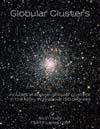 Globular
Clusters - All
globular clusters above -50° declination. This
list includes all Messier, NGC, Palomar, and Terzan
globular clusters. There are a few “impossible”
globulars, such as the two 2MASS globulars, FSR 1735, in
this list as well. 90+ globulars.
Globular
Clusters - All
globular clusters above -50° declination. This
list includes all Messier, NGC, Palomar, and Terzan
globular clusters. There are a few “impossible”
globulars, such as the two 2MASS globulars, FSR 1735, in
this list as well. 90+ globulars.
Most are
observable with an 8-inch scope, while a few are
challenging in 30-inch and larger telescopes. (128
pages, 10MB) Print Version
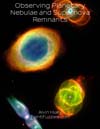 Planetary
Nebulae and Supernovae Remnants- Planetary
nebulae, supernovae remnants, and protoplanetaries that
are observable above about -50° declination and
north. About 350+ objects were
included. Many stellar planetary nebulae were left
out. (337 pages, 80MB) Print Version
Planetary
Nebulae and Supernovae Remnants- Planetary
nebulae, supernovae remnants, and protoplanetaries that
are observable above about -50° declination and
north. About 350+ objects were
included. Many stellar planetary nebulae were left
out. (337 pages, 80MB) Print Version
Deep
Sky Forum Observing Guides
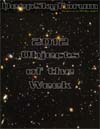 Object of
the week 2012 - An
observing book/log comprising all of the 2012
'Object of the Week' as posted at Deep Sky Forum.
Members
chose and discussed a different object every week.
You'll find a great selection of objects varying in type
and difficulty. Many objects may require at least
an 18 inch telescope and dark skies. (140 pages, 12MB)
Print Version
Object of
the week 2012 - An
observing book/log comprising all of the 2012
'Object of the Week' as posted at Deep Sky Forum.
Members
chose and discussed a different object every week.
You'll find a great selection of objects varying in type
and difficulty. Many objects may require at least
an 18 inch telescope and dark skies. (140 pages, 12MB)
Print Version
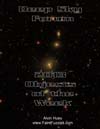 Object of
the week 2013 - An
observing book and log comprising all of the 2013
'Object of the Week' plus selected objects from the Off
the Beaten Path forum as posted at Deep Sky Forum.
Members chose and discussed a different object every
week. You'll find a great selection of objects
varying in type and difficulty. (246 pages, 28MB)
Print Version
Object of
the week 2013 - An
observing book and log comprising all of the 2013
'Object of the Week' plus selected objects from the Off
the Beaten Path forum as posted at Deep Sky Forum.
Members chose and discussed a different object every
week. You'll find a great selection of objects
varying in type and difficulty. (246 pages, 28MB)
Print Version
Texas
Star Party Advanced Observing Guides
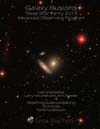 Galaxy
Illusions (2013) - A handy
observing list for Larry Mitchell's and Jim Chandler's Texas Star Party Advanced
Observing List. Observe BOTH galaxies in at least
20 pairs to qualify for the pin. (42 pages, 4MB) Print Version
Galaxy
Illusions (2013) - A handy
observing list for Larry Mitchell's and Jim Chandler's Texas Star Party Advanced
Observing List. Observe BOTH galaxies in at least
20 pairs to qualify for the pin. (42 pages, 4MB) Print Version
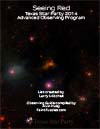 Seeing Red
(2014) - Observing
Guide for Larry Mitchell's Texas Star Party Advanced
Observing List. Observe at least 20 objects to
qualify for the pin. (42 pages, 4MB) Print Version
Seeing Red
(2014) - Observing
Guide for Larry Mitchell's Texas Star Party Advanced
Observing List. Observe at least 20 objects to
qualify for the pin. (42 pages, 4MB) Print Version
Note: Some of
these documents are best printed on both sides of the
paper to maximize the usefulness on the field as the
two-page spreads are built to be used together. It
is best to coil bind the pages. Any business
printing business can do that for you.
If you have good observations, feedback, or any other comments on these guides. Please email Alvin@faintfuzzies.com
FaintFuzzies.com. All Rights Reserved.

